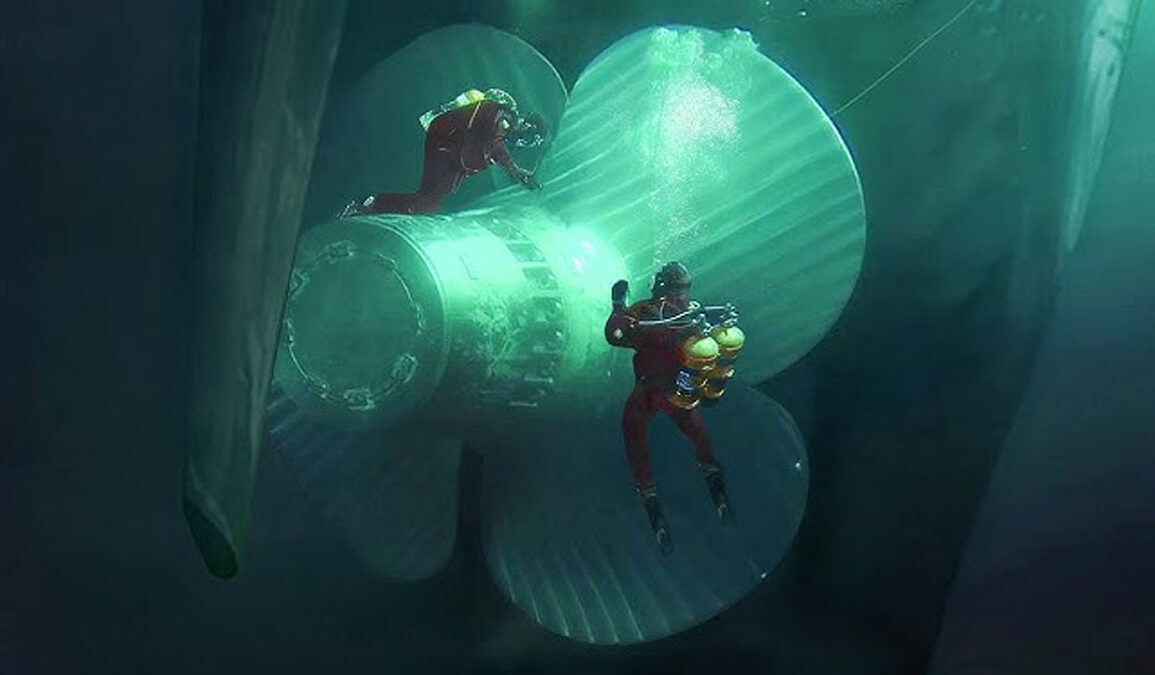Drug traffickers have a fresh twist on an old problem, and it clings to ships like a stubborn barnacle. The Epoch Times reports on “parasite smuggling,” a maritime trick in which cartels strap waterproof, often vacuum sealed narcotics to the hulls of commercial vessels below the waterline. When the ship reaches port, cartel divers slip into the harbor to cut the packages free. Crews and owners are none the wiser, which is why the tactic wears the parasitic label so well.
U.S. Border Patrol offered a textbook example in Miami. Border Patrol Chief Michael Banks said on X that BORSTAR divers “plunged beneath Miami waters and discovered a parasitic load strapped to the hull of a vessel arriving from the Dominican Republic,” then used specialized cutting tools to remove about eight pounds of cocaine. “Our specialized team made history with their first ever parasitic drug seizure,” he added, calling it “an innovative advancement to continuing narcotics interdiction efforts.”
What parasite smuggling looks like in practice
Think of it as a covert handoff, only the “hand” is steel and the “off” happens underwater. Cartel teams secure compact drug bundles to small cavities, brackets, or improvised compartments under the waterline. Divers meet the vessel at its destination and retrieve the load, ideally in the quiet hours when no one is watching. Brian Townsend, a retired DEA special agent, was not surprised. “Organizations are always looking for new ways to smuggle drugs. They shift quickly and adapt all the time to avoid enforcement and our interdiction operations.”
European authorities have seen the same play. The Times of London reported Albanian divers arrested in Norway while trying to recover roughly 330 pounds of cocaine from a ship that had sailed from Brazil. In the U.S. example highlighted by Border Patrol, the ship Hoheplate had arrived from the Dominican Republic, a reminder that proximity to Latin America makes American ports attractive targets. Most parasite cases described involve cocaine rather than fentanyl, a reflection of supply lines anchored in South America.
Who is moving the drugs, and who is being used
Cartels and transnational trafficking groups appear to be driving adoption. The people they use without consent are commercial shipowners and crews. The vessel is simply a convenient, floating billboard to hang a package on. Harshvardhan Kumar, a former ship’s captain and now a marine surveyor, described the human choreography behind it. “The same diver who places the package later flies to the other end of the world where the vessel calls and extracts the package personally.” He also noted that many ports require pre departure underwater inspections with a video recording for the captain, a document that can be shown “to placate” authorities at the next port. It is tidy paperwork for an inherently messy crime.
Parasite smuggling is appealing because it sidesteps routine cargo checks. Jim Weber, a former DHS narcotics investigator, called it “an unconventional method,” one that is “difficult to detect by law enforcement.” At the same time he pointed out the built in limits. The approach cannot match the tonnage moved in containers. As Weber put it, traffickers must choose: “Do you want to stick it in a cargo container and move massive quantities with a higher probability of getting intercepted, or do you want to go with a bit of a lower quantity that is more covert, and smuggled less conspicuously?”
Townsend sees the tactic as portfolio management for criminals. “I wouldn’t look at parasite smuggling as a replacement for other methods, I see it as a supplement that diversifies risk.” Cartels dislike single points of failure. If a tunnel is discovered or a trucking route gets hot, a few quietly clinging bundles can still slip through.
How hard is this to catch
Very hard if you are only opening containers and checking manifests. The contraband lives below the waterline, out of sight and away from scanners aimed at cargo. The work also requires trained divers, which raises risks for the smugglers. Townsend noted the obvious dangers around propellers and intake pipes, and the need for skill just to survive the retrieval. Yet the money is persuasive. Professional divers still sign up.
A CBP spokesperson said the agency is “acutely aware of and actively combats sophisticated methods employed by transnational terrorist organizations to smuggle illicit narcotics to the U.S. and Europe, including ‘parasite smuggling.’” The response is layered. “Intelligence teams vet arriving vessels and when the vessel arrives in port, CBP deploys underwater remotely operated vehicles and dive teams based on the vessel’s itinerary, country of origin, and any additional intelligence.” When drugs turn up, Homeland Security Investigations and Coast Guard investigators are called in. In other words, if smugglers want to play below the waterline, CBP will go swimming too.
The numbers that frame the cat and mouse
CBP reported 583,256 pounds of drugs seized between October 2024 and September 2025, up from 573,469 pounds the previous year. That included 185,004 pounds of marijuana and 170,119 pounds of methamphetamine. Fentanyl seizures fell from 21,889 pounds to 12,027, which Mexican attorney Ilan Katz described as the result of a “titanic effort” inside Mexico. Cocaine remains the star of the parasite show for now, reflecting routes from South America and the practicalities of working underwater with compact, high value loads.
Townsend warns that traffickers will iterate quickly. “Traffickers are very good at determining our schedule and patterns and how to exploit it.” That means ports cannot fall into predictable routines. Banks, for his part, cast the Miami seizure as a morale jolt for an agency he said faces an “immense challenge” under current border conditions. Operationally, the message is simple. Keep intelligence fresh, vary inspection rhythms, grow the diving and ROV capacity, and expect the other side to copy and counter.
A brief tour of the past, with a raised eyebrow
Criminal ingenuity is nothing if not creative. Recent years have featured fake car batteries with drug guts, ambulances with a “patient” riding shotgun next to hidden compartments, and even pineapples with unexpected fillings. There were wigs padded with cocaine, sculpted art cast with powdered bonuses, and the occasional drone run that ended with flashing lights instead of applause. Each stunt had the same punchline. Someone always thought this time would be different. Some examples:
- Fake car batteries: Seemingly working batteries concealing compartments filled with drugs, discovered repeatedly by agents; clever, noisy, and eventually uncomfortable for mechanics.
- Narco-ambulances: Ambulances repurposed as rolling vaults, sometimes with a fake patient, exploiting the low likelihood of emergency-vehicle stops.
- Ant plan: Shipments broken into tiny parcels and moved by many low-profile couriers so seizures do not collapse the entire operation.
- Camouflaged legal cargo: Cocaine hidden inside fruit, flowers, statues, or religious items shipped as legitimate trade to avoid detailed inspection.
- Chemical masking: Drugs temporarily mixed with oils, plastics, or pet food to fool detectors, then separated later by technicians.
- Drones with payloads: Custom drones ferry kilograms across borders where regulation and air defenses are weakest; fast, cheap, repeatable.
- Swallowed liquid packets: Couriers swallow condoms of liquid narcotics, which evade some scanners but risk deadly rupture from stomach acids.
- Fake prosthetics: Drugs sewn into or attached to prosthetic devices or padded clothing to hide kilogram quantities on travelers.
- Hidden under wigs: Small but valuable packages stashed beneath hairpieces to evade baggage checks and casual scrutiny.
- Soap box concealment: Drug-filled soap or packaged goods placed on store shelves accidentally reveal shipments when ordinary customers complain.
- Padded pants smuggling: Fabric padding or sewn-in pockets carry drugs around a person’s body to slip past cursory searches.
- Pineapple and produce hides: Fresh fruit crates used as cover for large loads, exploiting limited inspection of perishable shipments.
- Hollow sculptures: Artworks cast or hollowed to contain powdered drugs, a sophisticated ruse hiding contraband inside craftsmanship.
- Fake carrots and veggies: Produce crates repacked with narcotics to blend in with legitimate agricultural exports arriving in large volumes.
- Crutches and medical gear: Mobility aids hollowed to carry pills or powders, relying on sympathy to reduce inspection intensity.
- Lollipops and candy covers: Consumables repurposed as small concealment vectors for pills, easy to distribute but risky if detected.
- Furniture and candles: Bulky household items hollowed out to transport bulkier shipments that avoid x-rays and quick opens.
- Human mules with swallowed balloons: People forced or paid to ingest packets, a brutal method that sometimes proves fatal if balloons rupture.
Parasite smuggling does not move mountains of narcotics, but it does exploit a blind spot in a system built to scan boxes and question people, not to search the skin of a ship. It forces authorities to think like divers and to treat harbor water as part of the inspection lane. As BORSTAR’s first parasitic seizure shows, the United States is adapting. As Townsend and Weber remind us, so are the traffickers. The ocean is big, the hull is large, and the contest continues, one hidden bundle at a time.
NP Editor: Remember the figures for drugs seized are only a small portion of the total amount of drugs smuggled into the United States. The only way we have a clue is that DEA and others keep track of the street price of illegal drugs, and they know if the prices rise, they are having an effect. It is a tough problem








